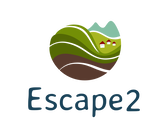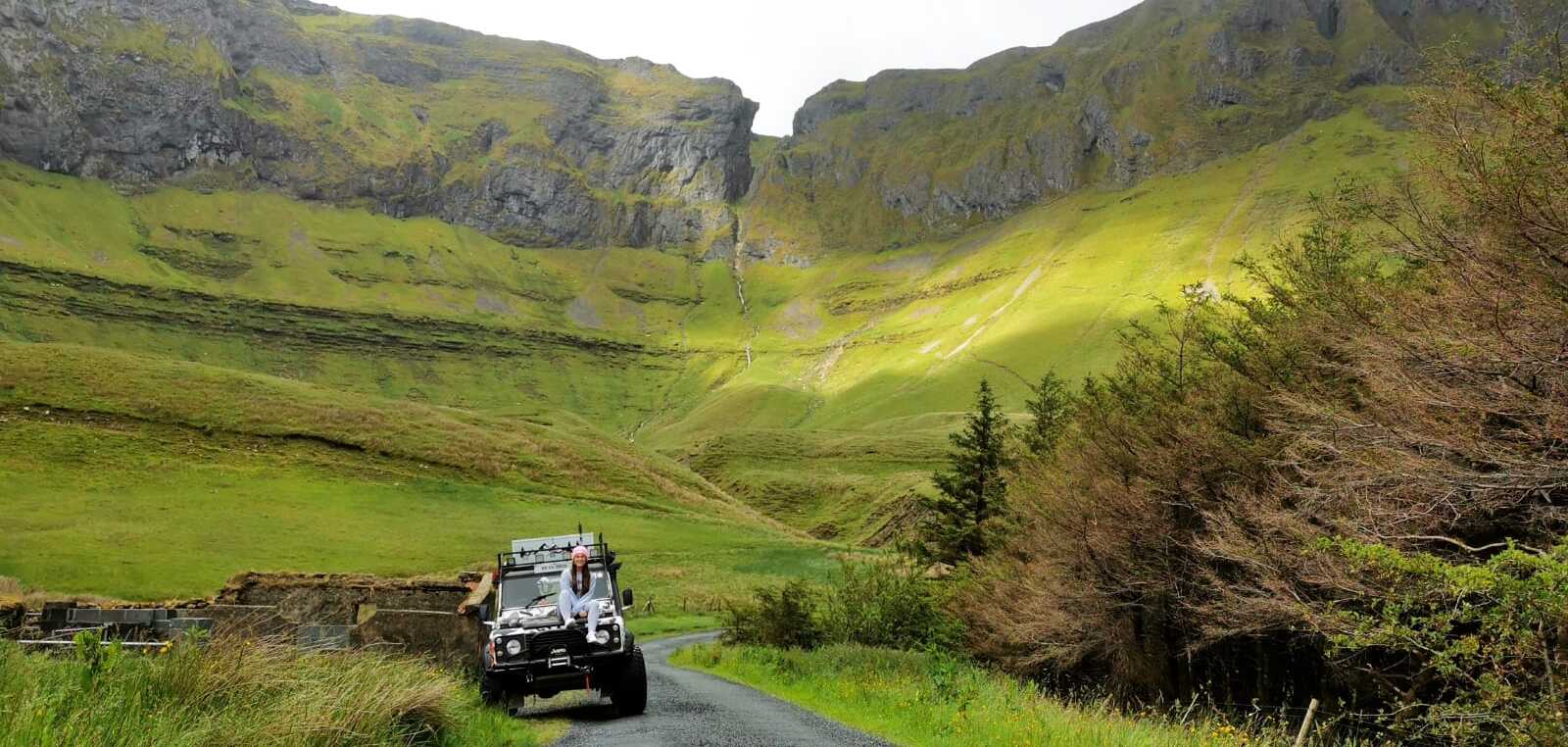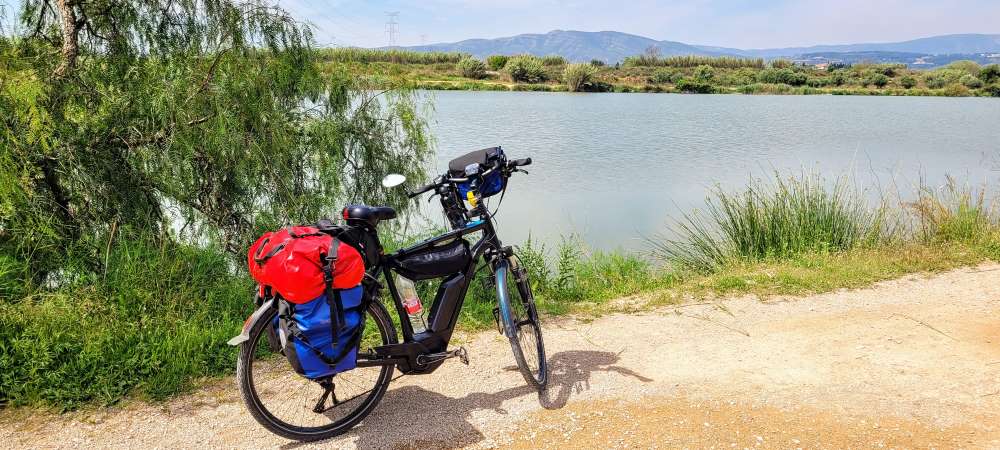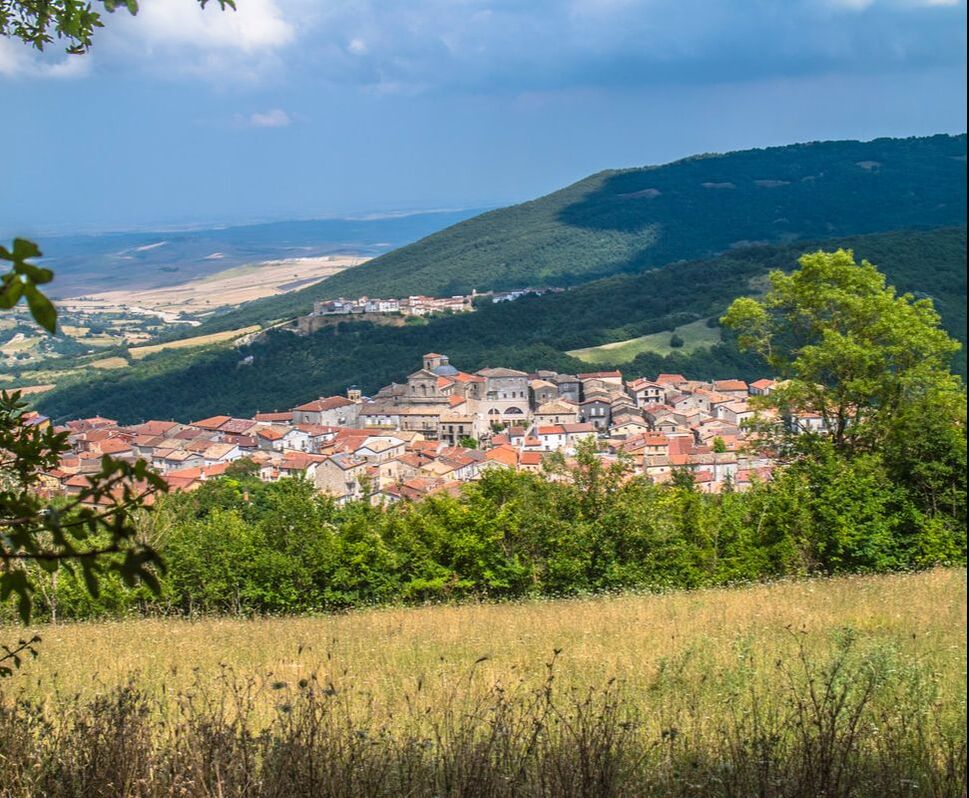"How to set a hıgh qualıty strategy" for rural tourısm | Pilot sessions experience - Greece11/7/2023 The "How to set a hıgh qualıty strategy" for rural tourısm course aimed to promote awareness of investing in a strategy to promote rural tourism since it has a major role in the economy and economic growth of a region, create a specific and innovative tool for developing such a strategy and demonstrate the advantages of working inside and with a network. Below we would like to share to you the pilot experiences in each of the partner countries. GreeceThe objective of the pilot was to make available to the trainees the results of the Escape2 project, as developed by the collaborative efforts of all partners. ALLI, with its extensive and successful record in adult education and training, aimed to actively and cogently educate the trainees on the evolution of the project curriculum and materials produced, so as to enable an effective and far-reaching teaching platform, fully optimized for online use. Trainees were to be trained on how institutions and public and private bodies should acknowledge that an effective rural tourism strategy has an important role in the economy and development of a region, as does the development of networks with multi-faceted action and influence. The pilots were organized by ALLI with the assistance of adult education and training experts. Margarita Defingou, Giannos Barbarousses,Konstantinos Makras and Dionysis Gkalantzis were involved in the training seminars. In order to find and attract trainees, ALLI used media techniques such as facebook posts and newsletters. A major success in advertising the project was their event in the Chamber of Commerce in Livadia, Boeotia, which was able to attract many visitors, and was commented by media. This was all the more important since Boeotia was one of the regions chosen to be part of the project, and where good practices were highlighted. The sessions began on Monday 19 June, and were scheduled to end on the first week of July. There were 8-10 sessions in total. ALLI had an excellent response in finding trainees, with almost 60 people showing interest in attending the sessions and program that we had prepared. Furthermore, their trainees came from different professional and educational backgrounds, allowing for a broad-based sample of people interested in what the project had accomplished and the concomitant training program. Among the trainees were farmers, civil servants, small and medium businesspeople active in tourism, hospitality and agriculture, schoolteachers and educators. There was particular interest among most trainees on Module 5, in particular its descriptions and proposed policies for European Union funding and for locating and attracting investors. The case studies and good practices of all modules were also followed and studied with great interest. Final thoughts In general, feedback was very positive. The training sessions were so designed as to allow an interactive learning process, where there was always time for discussion at the end of each seminar. Trainees expressed gratitude and satisfaction on the practical and useful nature of the training provided to them. The modules developed by the partnership were found to be comprehensive and applicable to real-life situations. Our seminars were evaluated as helping trainees develop specific and innovative tools that can help them understand the dynamics of rural tourism strategy and how they can use these dynamics in their professional environment.
0 Comments
"How to set a hıgh qualıty strategy" for rural tourısm | Pilot sessions experience - Turkey29/6/2023 The "How to set a hıgh qualıty strategy" for rural tourısm course aimed to promote awareness of investing in a strategy to promote rural tourism since it has a major role in the economy and economic growth of a region, create a specific and innovative tool for developing such a strategy and demonstrate the advantages of working inside and with a network. Below we would like to share to you the pilot experiences in each of the partner countries. TurkeyOn May 31 - June 2, 2023, the pilot sessions started online, then on June 3, 2023, the pilot project learning was completed with a face-to-face session, and the participants were asked to take time to review the modules and give feedback until June 7th in Istanbul, Türkiye . A total of 40 hours face-to-face and 80 hours online were targeted with pilot participants. Instructor was Prof.Dr. Sahure Gonca Telli from K-GEM. The sessions were attended by 8 participants:
The modules in which entrepreneurship and financial issues were shared attracted great interest from the students. Students also noted the importance of case studies. Case studies have been seen as a really good option and the right approach to understand the details. After the training we asked an open ended survey about the participants final thoughts on Escape 2 Project.
Rural tourism was a subject that interested me a lot and I had limited knowledge about it. Thanks to the project, I gained very valuable information. Today, like everything else, the form of tourism has changed. In this context, rural tourism has a very important potential especially for the development of our country. The information given in the project was quite sufficient. Considering the potential in our country, it is obvious that when the project is presented to large masses, it will create significant employment in rural areas. I think that the pilot project adds depth to the subject. It has increased my wealth of knowledge on rural tourism development. I think it will increase export sales as well as help people communicate. It was a very comprehensive information on the subject. The Escape 2 project is distinguished by seeing all the steps that entrepreneurs need to follow for rural development goals and supporting them with real-life studies. With the pilot project, it was the biggest gain for me to learn about rural tourism studies, especially in the countries that are members of the consortium. It increased my knowledge of rural tourism development and consolidated my knowledge in a holistic way. The biggest contribution of this project to me was to reduce the fear that prevented me from being an entrepreneur. I also feel more knowledgeable about rural tourism. I understood what kind of framework one should look at in order to realize a project on rural tourism. I am sure that presenting the project to large masses will help people to be informed about rural tourism. The subject was easy to understand and very informative thanks to both examples and an explanatory explanation. Image sources: https://www.freepik.com/
Bet you didn’t know that Leitrim is home to Ireland’s most rugged landscapes and dramatic formations where mountains, valleys, and lakes meet. Leitrim has countless beautiful mountain lakes dotted across its landscapes reaching into Ireland’s Hidden Heartland’s and The Wild Atlantic Way. Many of this unspoiled stunning scenery can be enjoyed from the roadside while others are more hidden. Leitrim has many spectacular waterfalls, discover stunning panoramic walks, wake up to fresh air and lush countryside, taste delicious fresh food and explore endless memorable experiences. Leitrim has the smallest population in Ireland of approx. 32000, is located in the Northwest of Ireland on the coast and is part of the UK border region. Leitrim is the 26th largest of the 32 counties in Ireland, its capital is Carrick on Shannon and it is a relatively small area. It is bordered by counties Donegal, Roscommon, Fermanagh, Cavan, Longford and Sligo. It is part of the famous Wild Atlantic Way and is known for its lakes, rivers, mountains and famous glacier valley Glenade. Glenade is known as one of the finest glacier valleys in Europe. Outside of the capital Carrick on Shannon, it has 9 other small towns and villages dotted throughout the county. Leitrim is particularly famous for its cascading waterfalls, majestic mountains, glacier valleys, rushing rivers, unspoiled stunning scenery, country living, open landscapes, sea and coastline, panoramic views, beautiful lakes, and farm experiences. The 4 most popular lakes (Lough Maclean Upper, Glencar Lough, Lough Allen, and Lough Gill), the famous Five Glens (Glencar, Glenfarne, Glenboy, Gleniff, and Glenade) located on the famous Wild Atlantic Way and in Ireland’s Hidden Heartlands… Cultural experiences that can be offered to tourists Leitrim’s natural heritage awakens the senses and provides the perfect escape from billboards, parking, racing against the clock, crowded buses, neon signs, and traffic jams. As soon as you arrive you feel refreshed, exhale, and feel the stress disappear, you will breathe like you never breathed before. Delve deeper into our natural experiences to reconnect with your mind, feel fitter, feel healthier, and feel free. So many activities to explore the outdoors, paddle in a canoe along calm rivers, kayak alone down a river, challenge your stamina and catch a surf, walk-in solitude, climb up a mountain with panoramic views, crack open the bubbles and have a sunset picnic. Let Loose! Do whatever you want, whenever you want with whoever you want! Culture and Heritage Attractions include the famous Parke’s Castle, Manorhamilton Castle, Sean MacDiarmada Homestead, Lough Rynn Castle, O’Rourkes Castle, Cavan and Leitrim Railway, Dromahair Abbey. Explore the smooth river waters and lakes on a Canadian Canoe. Glide along on a private Canadian canoe tour with the experts from Adventure Gently through the relaxing waterways of River Bonnet down to Lough Gill and surrounding islands. Suitable for anyone even grandparents and toddlers. Explore with experts Adrienne and Graham, watch the wildlife, learn the local folklore and stories, and maybe a surprise! You even get to set up a picnic camp on a private island. If you are lucky you might spot a Kingfisher! Canter with views over Lough Allen, Sliabh an Iarainn (Iron Mountain) and the Arigna Mountains. Moorlands Equestrian is in the heart of Leitrim with very affordable lessons and excursions to suit all levels of experience and ages. They offer cross country, hunting, pony camps, treks, ride-outs and are open all year round Walk or cycle at ease along Leitrim’s new Greenway. The new Sligo Leitrim Northern Counties Railway (SLNCR) Greenway is an old railway link currently being converted linking the Sligo, Leitrim and Fermanagh borders. This Greenway Loop will bring you for 5 km along its original line at Edergole Cottage, through to Bawn and Creevelea and along to the River Bonet then into Dromahair Shannon Blueway serenity! Way to Go Adventures offer guided round tours on the Shannon Blueway for a reasonable €25 per person. Each relaxing canoe tour is approx 3-4 hours with stops, exploring, sightseeing, and refreshments. One full day of bike hire for only €20 for adults. Offer six different canoe trips with a min of 2 and a max of 12 in a group. Ring to ask about their amazing slow adventure packages. Let’s Go Chasing Waterfalls! You have to see two of Leitrim’s most famous and stunning waterfalls Glencar Waterfall beside the idyllic Glencar Lake and Fowley’s Falls in Rossinver. Glencar Waterfall is a 50ft high waterfall inspired by WB Yeats and just a short distance from the famous TeaSHED where you can get scrumptious coffee, scones, and homemade delights. Very accessible located a short distance from the road through a wooded pathway near the car park. Has a picnic area, playground, and information points. Devils’ Chimney, Sligo is one of Ireland’s tallest waterfalls standing at 492 feet. Depending on the wind it does something special and rare where it blows itself backwards over the mountain top. Fowley’s Falls on the other side of North Leitrim is different from these two waterfalls and equally beautiful. Instead of a single-drop waterfall, it cascades several drops over exposed bedrock Accomodation Immerse yourself in accommodation with a special farming experience. Alder Cottage and Bluebell Organic Farm is located in Dromahair. Mary is well known for her homemade cooking and she will meet you with a warm welcome. Get involved in real-life farming with over 200 free-range hens, 30 sheep, gardens, fruit and veg gardens, and more. Choose from one of the many cookery or farming courses. You might even catch Mary in the kitchen making jams, chutneys, pestos, organic bread, mini quiches for the local farmers' markets. If you feel like staying Mary has the Bluebell Cottage available for self-catering next door
Farming experience accommodation and holistic caring packages: Ardvarney Country House B&B and Self Catering is close to Dromahair with views of the mountains, countryside, gardens, and farmyard from all directions. Even views from your bedroom window! Comfortable high-end accommodation, open all year round with a self-catering apartment that sleeps 4 and 4 guesthouse suites that sleep 2. Has a terrace for dining and activities such as hiking, walks, canoeing and cycling nearby. Wilfred and Carin are amazing hosts specialising in homemade breakfasts Location Lišov, southern part of central Slovakia; Krupina district, border of Nitra and Bansko-Bystrica self-governing regions. Lišov is located in the southern part of central Slovakia, on the border of the Nitra and Banská Bystrica self-governing regions, in the historical region of Hont. The Hont region is well known to tourists thanks to its lively folk traditions, rural architecture and viticulture, which is famous for its specific local autochthonous grape varieties. The landscape has a typical rural character. Lišov has preserved folk houses and there are specific rock dwellings carved into the tuff rocks of the volcanic mountain range (Krupina plateau). Today's territory of the village was inhabited by Neolithic cultures and also in the younger Bronze Age. The first written mention of a medieval village dates back to the second half of the 13th century. Farming, specifically viticulture and stonemasonry, were typical livelihood activities in the past. The countryside in Slovakia generally suffers from depopulation. However, this is not the case in Lišov. The population is predominantly of the productive age group and no population decline has been observed over the last 20 years. These predispositions of the rural environment, among other factors, stimulated the establishment of the Civic Association (CA) Lišov Museum in 2015. Over the last 7 years, the OZ Lišov Museum has become popular and attracts foreign visitors. This means that the hitherto unnoticed but picturesque village of Lišov has become known far beyond the borders of the region and Slovakia. Lišov Museum The house in which the museum is housed is called the Lišovská Izba (traditionally furnished folk room). The traditionally furnished folk room has the character of a museum exhibition. Since 2009 it has been included in the register of the Slovak National Museum. OZ Lišov Museum was founded by Jakub Dvorský, Adriana Patková and Martin David Clark in 2015 as a non-profit non-governmental organization. The museum house was originally built in 1916. In the past, it was inhabited by large large families. Thanks to the cultural events and festivals associated with the Lišov Museum, the village is known to tourists beyond the borders of the Hont region. The Lišov Museum has also financed the creation of the Masks Gallery, which contains an interesting collection of masks from different countries around the world, which also attracts foreign visitors. The Lišov Museum operates as an innovative community organisation providing educational tourism in the small village of Lišov. OZ Lišov Museum provides tourist educational activities and services in its three buildings; the first is a traditional Lišov Folk House called "Lišov Room" and showcases typical local and regional architectural features in a room that is decorated in a rural folk style; the second is a replica of a Celtic dwelling; and the third is the Mask Gallery, which houses a small shop with handmade products from local craftsmen, artists, and farmers. The Lišov Museum Association is currently working on the restoration of the 1887 house. Original materials such as clay, stone and wood are being used for the renovation. In the future, it is planned that there will be a café. The Lišov Museum is actively involved in educational activities funded by the ERASMUS+ programme and several exchanges have been carried out annually through this grant programme. The educational tourism business strategy combines innovative aspects that interact with expert knowledge of local and regional history and traditions. This core activity is further diversified into services provided directly in the three buildings. Trade with local products creates the basis for further promotion of local products by tourists visiting other regions of Slovakia and abroad. In this way they can share their experiences with other potential visitors. Trade in local products is a very important element of the circular economy, which is beneficial for the revival of weak economic activities in remote and economically marginalised villages, as is also the case in Lišov. The Lišov Museum organises various events and festivals. Very impressive are the Christmas markets that are organised in the museum complex. The museum in Lišov emphasizes the sustainability of business activities, which means the use of local materials and the use of inherited craftsmanship skills and goods produced in the village or region. Ultimately, all these sustainable activities support the quality of the landscape and add value to the rural environment. The preserved folk architecture and traditionally farmed agricultural landscape create valuable landscape features that increase the attractiveness of the landscape for tourists compared to commercially farmed agricultural landscapes with monocultures and large blocks of fields. In addition, traditional landscapes have significant natural values and are rich in biodiversity. The OZ Lišov Museum has also become popular through its website and social networks: [email protected] www.lisovmuzeum.sk. What key success factors would Jakub Dvorský, co-founder and current director of the Lišov Museum, like to share with others?
Tran is a region in Central Western Bulgaria and borders the Republic of Serbia. Once the town of Trаn was the main town / center of the district, but today it is a small municipality, including 52 settlements (51 villages and the town of Trаn.) It is located 70 km. west of the capital Sofia. Municipality of Tran is defined as a mountain region, it has a key geographical position - on the border with the Republic of Serbia, located in a uniquely beautiful and clean natural environment, with many cultural, historical, and religious monuments and natural resources. Tran region has the potential and prerequisites to become an attractive tourist destination, to attract suitable investors and to provide employment opportunities for local people and young entrepreneurs. One of the symbols of Tran is the rock chapel of St. Petka.
Interesting places to visit are the villages of “Busintsi” and “Studen Izvor” with the museums of ceramics and yogurt, and the biggest natural phenomenon is the gorge of the river Erma. Despite the low development of tourist infrastructure (and maybe thanks to that!) Tran region is visited by lots of mountain tourists with its many opportunities for hiking, trekking and adventure sports. In Tran region there are great conditions for mountain tourism. A Tran eco-trail has been built near the town. The most famous route is to Mount Rui, the highest in the area, which offers a wonderful view of the whole region. Rui Mountain is the most impressive in the municipality of Tran, and the peak is 1706 m high, as the border line between Bulgaria and Serbia and Montenegro passes along the very ridge of the peak. From there is a magnificent view in all directions. Several definitely interesting caves await their researchers for adventure tourism. Some of the favorite places for rest of the locals and tourists are the Vrabcha waterfall under the rocks before the village of Vrabcha, as well as the chapel of the Holy Mother of God after the village of Mramor. Tourists, who stay in a tent in the summer on the meadows in the forest, claim that at night they really understand what it means "the stars to land on your heads"! Many ancient and forgotten fortresses in the Tran region await their visitors, one of the most preserved is Kaleto above the village of Filipovtsi, and in the heart of Znepole rises a whole ancient and unexplored city - the fortress Zeman (Zemun) between Yarlovtsi and Zelenigrad, at the foot of which the ancient the Romans built mineral baths, used by the locals even at the beginning of the last century. Turning your personal interest into fun! Go local traveling |
Categories |
|
This website has been accomplished during the project "Escape2 - Supporting the Development of Transnational Thematic Tourism Strategy", Grant Agreement no. 2020-1-ES01-KA202-082418, implemented with financial support of the European Commission by the Erasmus+ Programme.
This publication reflects the views only of the author, therefore the European Commission cannot be held responsible for any use which may be made of the information contained therein. |
Project Number: 2020-1-ES01-KA202-082418
































